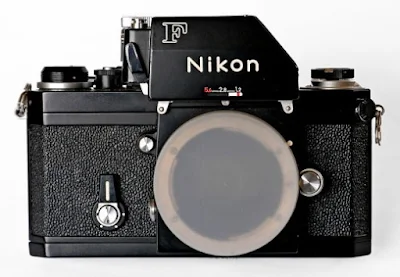This article introduces the development of the early mechanical Nikon F series 35mm SLR cameras, one of the major contributions to the development of the 35mm SLR camera industry. It fringes only on the introduction of the various models in the series.
Established in July 1917, Nippon Kogaku was an optical company manufacturing optical lenses and equipment used in cameras, binoculars, microscopes, and inspection equipment, and later, consumer-level Nikkorex and Nikkormat cameras. The name Nikon was chosen for the camera line targeted at the professional market.
The line's first branded camera was the Nikon 1, a rangefinder introduced in 1948.
(The Nikon 1 name was revived in 2011 when Nikon introduced their high-speed mirrorless interchangeable-lens cameras that were capable of doing 60 frames per second (fps) continuous shooting speed.)
Nikon 100 Year Anniversary - Celebrating the Iconic F-mount
To celebrate Nikon's 100 Year Anniversary, we take a look back at the iconic F-mount, used in all Nikon SLR's and DSLR's. In production for over five decades...
Nikon's rangefinder series continued with the Nikon M (1949), Nikon S (1951), S2 (1955), SP (1957), and S3 (1958). The SP bodies were the basis for the development of the Nikon F and F2 system cameras introduced from 1959 onward.
The SP was the basis for the development of the Nikon F and F2 system cameras introduced from 1959 onward.
Nikon F
The Nikon F (1959), is a cumulation of various concepts and implementation of a system that includes interchangeable prisms, interchangeable focusing screens, depth-of-field preview button, mirror lock-up capability, easy access lens release button, single-stroke ratcheted film advance lever, titanium-foil focal-plane shutter, rapid rewind lever, and fully removable backs.Metering prisms or the Photomic head for the Nikon F began to appear in 1960. Throughout the Nikon F production, three variations of the TTL Photomic heads were produced, the Photomic F, Photomic FT, and the Photomic FTn (1968). Metering on the FTn is 60% center-weighted, later to become the standard pattern for Nikon's SLR cameras.
The Nikon F was a success. It was the first SLR system to be adopted and used seriously by professional photographers, especially those who were covering the Vietnam War of the '60s and '70s. Motor-driven Nikon Fs with 250-exposure backs are also the mainstay for recording launches of the space capsules in the Mercury, Gemini, and Apollo space programs.
Nikon F 35mm Film Camera Overview / Review
A comprehensive look at Nikon's 1st SLR camera. The video shows all the controls and features as well as it's use with an electronic flash and different lenses.
Nikon F2
The Nikon F2, recognized as the world's top professional 35mm SLRs from 1971 through 1980, is fitted with a horizontal-travel focal plane shutter with titanium shutter curtains with a speed range of 1 to 1/2000 second (up to 10 seconds using the self-timer) plus Bulb and Time, and flash X-sync of 1/80th second.
The Nikon F2 is also unique in having manual shutter speeds out to 10 full seconds, which are also continuously variable from 2 to 10 seconds. You use them by setting the shutter dial to B, rotating the shutter button collar to "T" (Time), and turning the self-timer lever to the desired exposure time in seconds. Press the shutter button, and it opens immediately and makes the desired long exposure.
Five developments of the Photomic heads were made available for the F2, designating the variants of this model as the F2 Photomic, F2 Photomic S, F2 Photomic SB, F2 Photomic A, and F2 Photomic AS, currently the most sought-after collectors model in the F2 series.
Nikon F2 35mm Film Camera Overview / Review (Part 1)
This is an overview of the Nikon F2 professional 35mm film camera that was produced from 1971 to 1980. The controls and features of the camera are explained ...
Nikon F3
With the F3, Nikon replaced the mechanically operated shutter of the F2 with a modern, electronically controlled, horizontally traveled metal curtain design. The new shutter proved to be equally reliable and less maintenance-intensive than its predecessors. The horizontal-travel design (of the shutter) however, significantly limited its top flash sync speed to 1/80 sec.
The Nikon F3 series cameras had the most model variations of any Nikon F camera, this includes the F3HP, F3/T, F3P, F3H, and F3AF. It was also the first of numerous Nikon F-series cameras to be styled by Italian designer Giorgetto Giugiaro and to include a red stripe on the handgrip – a feature that is to become a signature feature of many Nikon cameras.
The F3 was produced for 21 years until it was discontinued in 2001.
Nikon F3 35mm Film Camera Overview / Review (Part1)
A look at the Nikon F3 35mm film camera that was introduced in 1980. Production ran until the year 2000, making it Nikon's longest selling professional camer...
















No comments:
Post a Comment